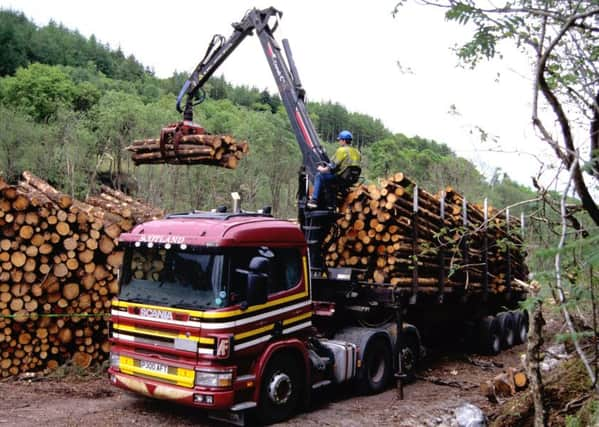Government pressed for timber roads cash


It follows a recent review by the local authority’s watchdog scrutiny committee which took evidence on the impact of timber transport on the region’s ailing road network.
SBC’s executive agreed on Tuesday to accept scrutiny’s recommendation that council leader David Parker should write to the Scottish Government asking it to consider the effect and cost to rural roads and communities both now and in the future.
Advertisement
Hide AdAdvertisement
Hide AdAnd he will specifically demand “more funding for the road infrastructure to prepare the public road network … and rectify any resultant damage … caused by timber extraction”.
In support of his case, Mr Parker will cite the fact that commercial forests cover 18.5% of the Borders land area – the highest concentration of the industry in the UK and well above the total Scottish coverage of 14%.
In addition, an Audit Scotland report revealed last year that 42% of the 750km of C roads in the Borders and 57% of the 1,159km of unclassified roads – which SBC has a statutory duty to maintain – were in need of repair, compared to Scotland-wide averages of 37% and 38% respectively.
And although only a contributory factor, the timber transport sector, worth around £50million a year to the Scottish economy and supporting 1,200 full-time jobs, makes no financial contribution to the repair of these roads which, unlike A and B routes, are not classified as “agreed routes” for timber transportation.
Advertisement
Hide AdAdvertisement
Hide AdDuring the scrutiny review, James England, south of Scotland timber transport officer, who liaises between councils and the industry, said many of the forests in the Borders were planted in the 1970s and were now maturing, leading to “a substantial increase in timber traffic”.
“The majority of planting was in remote areas with poor access through narrow, rural roads which were inherently weak and not suitable for heavy timber vehicles,” he stated.
The committee heard that the Scottish Government aspired to increase annual production nationally from 7.4million tonnes in 2014 to 10million tonnes through to 2035 and was being lobbied by the timber transport industry for a long-term investment plan “to ensure the road network can meet the increasing demands of the industry”.
Sharing that hope and welcoming this week’s executive decision to seek more funding from the Scottish Government, Councillor George Turnbull, chair of the scrutiny committee, told The Southern: “At meetings of community councils, especially rural ones, we hear about damage to road surfaces and verges, issues of noise and convoying and of rural roads being blocked while stacked timber is being loaded onto lorries.
Advertisement
Hide AdAdvertisement
Hide Ad“With more landowners being encouraged to plant out trees, this is costly problem which is not going to go away.”
Meanwhile, the need for more investment in the region’s roads infrastructure was acknowledged last week in the outgoing council’s budget which, despite cuts in other service areas, will see combined capital and revenue spending on the network increased to £15.6million in 2017/18.